Title search results
Showing 1488401 - 1488420 of 1502757 items
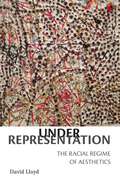
Under Representation: The Racial Regime of Aesthetics
By David Lloyd. 2019
Under Representation shows how the founding texts of aesthetic philosophy ground the racial order of the modern world in our…
concepts of universality, freedom, and humanity. In taking on the relation of aesthetics to race, Lloyd challenges the absence of sustained thought about race in postcolonial studies, as well as the lack of sustained attention to aesthetics in critical race theory.Late Enlightenment discourse on aesthetic experience proposes a decisive account of the conditions of possibility for universal human subjecthood. The aesthetic forges a powerful “racial regime of representation” whose genealogy runs from enlightenment thinkers like Kant and Schiller to late modernist critics like Adorno and Benjamin. For aesthetic philosophy, representation is not just about depiction of diverse humans or inclusion in political or cultural institutions. It is an activity that undergirds the various spheres of human practice and theory, from the most fundamental acts of perception and reflection to the relation of the subject to the political, the economic, and the social.Representation regulates the distribution of racial identifications along a developmental trajectory: The racialized remain “under representation,” on the threshold of humanity and not yet capable of freedom and civility as aesthetic thought defines those attributes. To ignore the aesthetic is thus to overlook its continuing force in the formation of the racial and political structures down to the present. Across five chapters, Under Representation investigates the aesthetic foundations of modern political subjectivity; race and the sublime; the logic of assimilation and the stereotype; the subaltern critique of representation; and the place of magic and the primitive in modernist concepts of art, aura and representation.Both a genealogy and an account of our present, Under Representation ultimately helps show how a political reading of aesthetics can help us build a racial politics adequate for the problems we face today, one that stakes claims more radical than multicultural demands for representation.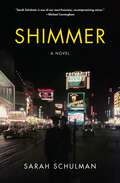
Shimmer
By Sarah Schulman. 1998
A revelatory portrait of McCarthy-era Manhattan—back in print!It is 1948 in Manhattan. Aspiring reporter Sylvia Golubowsky pays her dues in…
the steno pool at the tabloid New York Star, along with sixteen other girls whose eyes are on the back of the chair in front of them, the next step up the ladder. At the rival paper across town, gossip columnist Austin Van Cleeve rules New York and Washington with his venomous pen. In the Village, Columbia University graduate Cal Byfield is stuck flipping burgers to support his dream of a Negro theater on Broadway.Against the backdrop of post–World War II New York City and under the growing shadow of the Red Scare, these three indelible characters collide with one another amidst the larger drama of the historical moment. In a fresh re-interpretation of the McCarthy era, Sarah Schulman reframes our understanding of the “blacklist” to show how racial and sexual discrimination create their own ongoing exclusions and how the politics of treachery affect the most intimate relationships.First published in 1998, Shimmer draws parallels between the McCarthy era and contemporary American life and upends the tropes of film noir, pulp fiction, and set pieces of midcentury America by positioning a Black man and a queer Jewish woman as emblematic Americans. In a story set before the advent of the collective revolutionary movements of the 1960s, Cal and Sylvia learn the hard way that the American Dream was not available to them.This new edition of Shimmer includes a postscript by the author.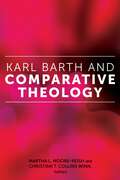
Karl Barth and Comparative Theology (Comparative Theology: Thinking Across Traditions #7)
By Martha L. Moore-Keish and Christian T. Collins Winn. 2019
Building on recent engagements with Barth in the area of theologies of religion, Karl Barth and Comparative Theology inaugurates a…
new conversation between Barth’s theology and comparative theology. Each essay brings Barth into conversation with theological claims from other religious traditions for the purpose of modeling deep learning across religious borders from a Barthian perspective. For each tradition, two Barth-influenced theologians offer focused engagements of Barth with the tradition’s respective themes and figures, and a response from a theologian from that tradition then follows. With these surprising and stirringly creative exchanges, Karl Barth and Comparative Theology promises to open up new trajectories for comparative theology.Contributors: Chris Boesel, Francis X. Clooney, Christian T. Collins Winn, Victor Ezigbo, James Farwell, Tim Hartman, S. Mark Heim, Paul Knitter, Pan-chiu Lai, Martha L. Moore-Keish, Peter Ochs, Marc Pugliese, Joshua Ralston, Anantanand Rambachan, Randi Rashkover, Kurt Richardson, Mun’im Sirry, John Sheveland, Nimi Wariboko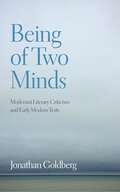
Being of Two Minds: Modernist Literary Criticism and Early Modern Texts
By Jonathan Goldberg. 2022
Being of Two Minds examines the place that early modern literature held in Modernist literary criticism. For T. S. Eliot,…
Virginia Woolf, and William Empson, the early modern period helps model a literary future. At stake in their engagements across time were ontological questions about literature and its ability to mediate between the one and the many, the particular and the general, life and death, the past and the present. If reading and writing literature enables the mind to be in two places at once, creative experience serves as a way to participate in an expanded field of consciousness alongside mortality.Goldberg reads the readings that these modernists performed on texts that Eliot claimed for the canon like the metaphysical poets and Jacobean dramatists, but also Shakespeare, Milton, Montaigne, and Margaret Cavendish. Ontological concerns are reflected in Eliot’s engagement with Aristotle’s theory of the soul and Empson’s Buddhism. These arguments about being affect minds and bodies and call into question sexual normativity: Eliot glances at a sodomitical male-male mode of literary transmission; Woolf produces a Judith Shakespeare to model androgynous being; Empson refuses to distinguish activity from passivity to rewrite gender difference.The work of one of our leading literary and cultural critics, Being of Two Minds spans centuries to show how the most compelling and surprising ideas about mind, experience, and existence not only move between early modernity, high modernism, and our own moment, but are also constituted through that very movement between times and minds.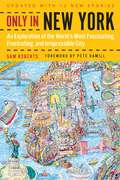
No one denies that New York City is unique—but what makes it sui generis? Sam Roberts, a longtime city reporter,…
has puzzled over this in print and in his popular New York Times podcasts for years. In Only in New York, updated with new tales and fascinating glimpses into uniquely NYC life, he writes about what makes this city tick and why things are the way they are in the greatest of all metropolises on earth. The more than 75 essays in this book cover a variety of topics, including:-How do New Yorkers react during disasters?-Maritime history (the Hudson River)-Crowds, space, and population growth-1908: a year in History history-Jewish Daily Forward-What happens when a neighborhood loses its tony ZIP code?A winning and informative gift book for every fan of “the city,” Only in New York is elegantly written and solidly reported.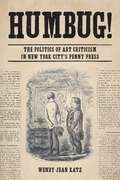
Humbug!: The Politics of Art Criticism in New York City's Penny Press
By Wendy Jean Katz. 2020
Approximately 300 daily and weekly newspapers flourished in New York before the Civil War. A majority of these newspapers, even…
those that proclaimed independence of party, were motivated by political conviction and often local conflicts. Their editors and writers jockeyed for government office and influence. Political infighting and their related maneuvers dominated the popular press, and these political and economic agendas led in turn to exploitation of art and art exhibitions. Humbug traces the relationships, class animosities, gender biases, and racial projections that drove the terms of art criticism, from the emergence of the penny press to the Civil War.The inexpensive “penny” papers that appeared in the 1830s relied on advertising to survive. Sensational stories, satire, and breaking news were the key to selling papers on the streets. Coverage of local politicians, markets, crime, and personalities, including artists and art exhibitions, became the penny papers’ lifeblood. These cheap papers, though unquestionably part of the period’s expanding capitalist economy, offered socialists, working-class men, bohemians, and utopianists a forum in which they could propose new models for American art and society and tear down existing ones.Arguing that the politics of the antebellum press affected the meaning of American art in ways that have gone unrecognized, Humbug covers the changing politics and rhetoric of this criticism. Author Wendy Katz demonstrates how the penny press’s drive for a more egalitarian society affected the taste and values that shaped art, and how the politics of their art criticism changed under pressure from nativists, abolitionists, and expansionists. Chapters explore James Gordon Bennett’s New York Herald and its attack on aristocratic monopolies on art; the penny press’s attack on the American Art-Union, an influential corporation whose Board purchased artworks from living artists, exhibited them in a free gallery, and then distributed them in an annual five-dollar lottery; exposés of the fraudulent trade in Old Masters works; and the efforts of socialists, freethinkers, and bohemians to reject the authority of the past.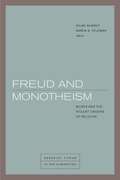
Freud and Monotheism: Moses and the Violent Origins of Religion (Berkeley Forum in the Humanities)
By Karen S. Feldman, Gilad Sharvit. 2018
Over the last few decades, vibrant debates regarding post-secularism have found inspiration and provocation in the works of Sigmund Freud.…
A new interest in the interconnection of psychoanalysis, religion and political theory has emerged, allowing Freud’s illuminating examination of the religious and mystical practices in “Obsessive Neurosis and Religious Practices,” and the exegesis of the origins of ethics in religion in Totem and Taboo, to gain currency in recent debates on modernity. In that context, the pivotal role of Freud’s masterpiece, Moses and Monotheism, is widely recognized. Freud and Monotheism brings together fundamental new contributions to discourses on Freud and Moses, as well as new research at the intersections of theology, political theory, and history in Freud’s psychoanalytic work. Highlighting the broad impact of Moses and Monotheism across the humanities, the contributors hail from such diverse disciplines as philosophy, comparative literature, cultural studies, German studies, Jewish studies and psychoanalysis.Jan Assmann and Richard Bernstein, whose books pioneered the earlier debate that initiated the Freud and Moses discourse, seize the opportunity to revisit and revise their groundbreaking work. Gabriele Schwab, Gilad Sharvit, Karen Feldman, and Yael Segalovitz engage with the idiosyncratic, eccentric and fertile nature of the book as a Spӓtstil, and explore radical interpretations of Freud’s literary practice, theory of religion and therapeutic practice. Ronald Hendel offers an alternative history for the Mosaic discourse within the biblical text, Catherine Malabou reconnects Freud’s theory of psychic phylogenesis in Moses and Monotheism to new findings in modern biology and Willi Goetschel relocates Freud in the tradition of works on history that begins with Heine, while Joel Whitebook offers important criticisms of Freud’s main argument about the advance in intellectuality that Freud attributes to Judaism.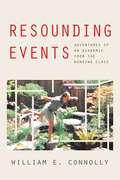
Resounding Events: Adventures of an Academic from the Working Class
By William E. Connolly. 2022
Winner, David Easton Award for Political Theory, 2023In Resounding Events, one of the world’s preeminent political theorists reflects on a…
career as an academic hailing from the working class. From youthful experiences of McCarthyism, to the resurgence of white evangelicalism, to the advent of aspirational fascism and the acceleration of the Anthropocene, Connolly traces a career spent passionately engaged in making a more just, diverse, and equitable world. He surveys the shifting ground upon which politics can be pursued; and he discloses how to be an intellectual in universities that today do not encourage that practice.Far more than a memoir, Resounding Events probes the concerns that have animated Connolly’s work across more than a dozen books by tracing the bumpy imbrications of event, memory and thinking in intellectual life. Connolly experiments with ways to capture various voices that mark a self at any time. An event, as he elaborates it, is what disturbs or inspires thinking as it activates layered sheets of memory. A memory sheet itself assembles recollections, dispositions organized from the past, and vague remains that carry efficacies.Resounding Events shows how resonances between event and memory can help forge new concepts better adjusted to an emergent situation. Addressing tensions between working class experience and norms of the academy, his father’s coma, antiwar protests, the growing disaffection of the white working class, the neoliberalization of the university, climate denialism, and his sister’s experience with workers shifting to Trump, Connolly shows how engaged intellectuals become worthy of the events they encounter.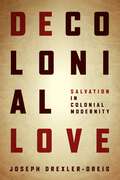
Decolonial Love: Salvation in Colonial Modernity
By Joseph Drexler-Dreis. 2019
Bringing together theologies of liberation and decolonial thought, Decolonial Love interrogates colonial frameworks that shape Christian thought and legitimize structures…
of oppression and violence within Western modernity. In response to the historical situation of colonial modernity, the book offers a decolonial mode of theological reflection and names a historical instance of salvation that stands in conflict with Western modernity. Seeking a new starting point for theological reflection and praxis, Joseph Drexler-Dreis turns to the work of Frantz Fanon and James Baldwin. Rejecting a politics of inclusion into the modern world-system, Fanon and Baldwin engage reality from commitments that Drexler-Dreis describes as orientations of decolonial love. These orientations expose the idolatry of Western modernity, situate the human person in relation to a reality that exceeds modern/colonial significations, and catalyze and authenticate historical movement in conflict with the modern world-system. The orientations of decolonial love in the work of Fanon and Baldwin—whose work is often perceived as violent from the perspective of Western modernity—inform theological commitments and reflection, and particularly the theological image of salvation.Decolonial Love offers to theologians a foothold within the modern/colonial context from which to commit to the sacred and, from a historical encounter with the divine mystery, face up to and take responsibility for the legacies of colonial domination and violence within a struggle to transform reality.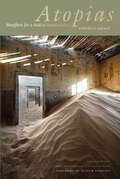
Atopias: Manifesto for a Radical Existentialism (Lit Z)
By Frédéric Neyrat. 2018
This book offers a manifesto for a radical existentialism aiming to regenerate the place of the outside that contemporary theory…
underestimates. Neyrat calls this outside “atopia”: not utopia, a dreamt place out of the world where everything would be perfect, but atopia, the internal outside that is at the core of every being. Atopia is neither an object that an “object-oriented ontology” would be able to formalize, nor the matter that “new materialisms” could identify. Atopia is what constitutes the existence of any object or subject, its singularity or more precisely its “eccentricity.” Etymologically, to exist means “to be outside” and the book argues that every entity is outside, thrown in the world, wandering without any ontological anchor. In this regard, a radicalized existentialism does not privilege human beings (as Sartre and Heidegger did), but considers existence as a universal condition that concerns every being.It is important to offer a radical existentialism because the current denial of the outside is politically, and aesthetically, damaging. Only an atopian philosophy—a bizarre, extravagant, heretic philosophy—can care for our fear of the outside. For therapeutic element, a radical existentialism favors everything that challenges the compact immanence in which we are trapped, losing capacity to imagine political alternatives. To sustain these alternatives, the book identifies the atopia as a condition of the possibility to break immanence and analyze these breaks in human and animal subjectivity, language, politics and metaphysics.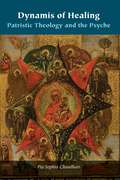
Dynamis of Healing: Patristic Theology and the Psyche (Orthodox Christianity and Contemporary Thought)
By Pia Sophia Chaudhari. 2019
This book explores how traces of the energies and dynamics of Orthodox Christian theology and anthropology may be observed in…
the clinical work of depth psychology. Looking to theology to express its own religious truths and to psychology to see whether these truth claims show up in healing modalities, the author creatively engages both disciplines in order to highlight the possibilities for healing contained therein. Dynamis of Healing elucidates how theology and psychology are by no means fundamentally at odds with each other but rather can work together in a beautiful and powerful synergia to address both the deepest needs and deepest desires of the human person for healing and flourishing.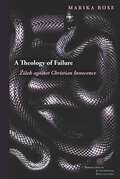
Everyone agrees that theology has failed; but the question of how to understand and respond to this failure is complex…
and contested. Against both the radical orthodox attempt to return to a time before the theology’s failure and the deconstructive theological attempt to open theology up to the hope of a future beyond failure, Rose proposes an account of Christian identity as constituted by, not despite, failure. Understanding failure as central to theology opens up new possibilities for confronting Christianity’s violent and kyriarchal history and abandoning the attempt to discover a pure Christ outside of the grotesque materiality of the church.The Christian mystical tradition begins with Dionysius the Areopagite’s uncomfortable but productive conjunction of Christian theology and Neoplatonism. The tensions generated by this are central to Dionysius’s legacy, visible not only in subsequent theological thought but also in much twentieth century continental philosophy as it seeks to disentangle itself from its Christian ancestry. A Theology of Failure shows how the work of Slavoj Žižek represents an attempt to repeat the original move of Christian mystical theology, bringing together the themes of language, desire, and transcendence not with Neoplatonism but with a materialist account of the world. Tracing these themes through the work of Dionysius and Derrida and through contemporary debates about the gift, violence, and revolution, this book offers a critical theological engagement with Žižek's account of social and political transformation, showing how Žižek's work makes possible a materialist reading of apophatic theology and Christian identity.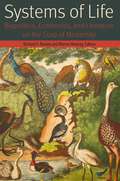
Systems of Life: Biopolitics, Economics, and Literature on the Cusp of Modernity (Forms of Living)
By Richard A. Barney and Warren Montag. 2019
Systems of Life offers a wide-ranging revaluation of the emergence of biopolitics in Europe from the mid– eighteenth to the…
mid–nineteenth century. In staging an encounter among literature, political economy, and the still emergent sciences of life in that historical moment, the essays collected here reopen the question of how concepts of animal, vegetable, and human life, among other biological registers, had an impact on the Enlightenment project of thinking politics and economics as a joint enterprise. The volume’s contributors consider politics, economics, and the biological as distinct, semi-autonomous spheres whose various combinations required inventive, sometimes incomplete, acts of conceptual mediation, philosophical negotiation, disciplinary intervention, or aesthetic representation.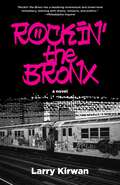
Rockin' the Bronx
By Larry Kirwan. 2025
Discover the untold story of 1980s Irish New York, where love, politics, and rock 'n' roll collide in a gritty…
urban tale that's as passionate as it is poignant.Rockin’ The Bronx vividly transports readers to the vibrant and chaotic world of 1980s Bronx, where Irish immigrants forged a new community amidst the backdrop of political upheaval and cultural transformation. Larry Kirwan, leader of the revolutionary band Black 47, blends drama, passion, and musical evolution into a narrative that captures the essence of an era defined by its challenges and triumphs. Through the eyes of characters like the groundbreaking gay hero, a book-loving, hard-hitting immigrant with IRA roots, and the central couple, Seán and Mary, who navigate this raucous landscape, Kirwan explores the intersecting worlds of personal identity and communal struggle. Set during significant historical moments—the deaths of John Lennon and Bobby Sands, the AIDS crisis, and the birth of new musical movements—this novel not only tells the story of its characters but also of a neighborhood echoing with the rhythms of change. As these Irish immigrants carve out their destinies, they leave behind a legacy of resilience and rebirth, encapsulated in a narrative that moves irrepressibly to the beat of the 1980s. Rockin' The Bronx is more than a novel; it’s a chronicle of a time when being Irish in New York could mean everything from strapping on a Stratocaster to knocking down walls both structural and cultural." data-fwclientid="8689d109-65f9-4971-bf1f-858e6c13ac9c" data-preservehtmlbullets="1" data-allowlists="0" data-crlfsubmit="1" autocomplete="off" spellcheck="true" class="field_input_main field_input_copytext field_input_copytext_body copytextheight-normal field_input_disabled fieldkeycheck-setup copytext-setup" contenteditable="false">Discover the untold story of 1980s Irish New York, where love, politics, and rock 'n' roll collide in a gritty urban tale that's as passionate as it is poignant.Rockin’ The Bronx vividly transports readers to the vibrant and chaotic world of 1980s Bronx, where Irish immigrants forged a new community amidst the backdrop of political upheaval and cultural transformation. Larry Kirwan, leader of the revolutionary band Black 47, blends drama, passion, and musical evolution into a narrative that captures the essence of an era defined by its challenges and triumphs. Through the eyes of characters like the groundbreaking gay hero, a book-loving, hard-hitting immigrant with IRA roots, and the central couple, Seán and Mary, who navigate this raucous landscape, Kirwan explores the intersecting worlds of personal identity and communal struggle. Set during significant historical moments—the deaths of John Lennon and Bobby Sands, the AIDS crisis, and the birth of new musical movements—this novel not only tells the story of its characters but also of a neighborhood echoing with the rhythms of change. As these Irish immigrants carve out their destinies, they leave behind a legacy of resilience and rebirth, encapsulated in a narrative that moves irrepressibly to the beat of the 1980s. Rockin' The Bronx is more than a novel; it’s a chronicle of a time when being Irish in New York could mean everything from strapping on a Stratocaster to knocking down walls both structural and cultural.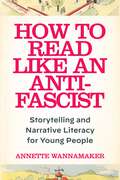
How to Read Like an Anti-Fascist: Storytelling and Narrative Literacy for Young People
By Annette Wannamaker. 2025
On the urgent need to promote critical reading skills amidst rising authoritarianismChildren’s author Philip Pullman famously said that “There are…
some themes, some subjects, too large for adult fiction; they can only be dealt with adequately in a children’s book.” While the recent rise of fascist ideology in the United States might seem a subject too large and adult to be dealt with in literature for children or teens, Annette Wannamaker proposes in How to Read Like an Anti-Fascist that there are books aimed at future generations which critique and counter fascist propaganda and mythmaking.Works of literature can reflect fascist ideology and promote it as well, but Wannamaker proposes that some books also offer tools for understanding it. Books written for beginners can introduce readers to complex concepts, break big ideas into manageable parts, and teach readers how to read the world outside of the book. Antifascist books are ones that analyze fascistic rhetoric and storytelling, educate about America’s long history of authoritarianism, and highlight various facets of fascism such as scapegoating others and reasserting patriarchal power.From “The Emperor’s New Clothes” and the tales of Superman to Mildred Taylor’s Roll of Thunder, Hear My Cry, the 1619 Project and contemporary works such as All Boys Aren’t Blue and Donald Builds the Wall, Wannamaker shows how the ethos of authoritarianism is characterized by a strict hierarchy that places children at its very bottom. In doing so, she argues convincingly that books written for young people can provide a particular view from the bottom, a perspective well-suited to interrogating systems of power.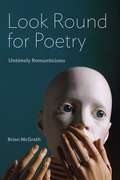
Look Round for Poetry: Untimely Romanticisms (Lit Z)
By Brian McGrath. 2022
Poetry is dead. Poetry is all around us. Both are trite truisms that this book exploits and challenges.In his 1798…
Advertisement to Lyrical Ballads, William Wordsworth anticipates that readers accustomed to the poetic norms of the day might not recognize his experiments as poems and might signal their awkward confusion upon opening the book by looking round for poetry, as if seeking it elsewhere. Look Round for Poetry transforms Wordsworth’s idiomatic expression into a methodological charge. By placing tropes and figures common to Romantic and Post-Romantic poems in conjunction with contemporary economic, technological, and political discourse, Look Round for Poetry identifies poetry’s untimely echoes in discourses not always read as poetry or not always read poetically.Once one begins looking round for poetry, McGrath insists, one might discover it in some surprising contexts. In chapters that spring from poems by Wordsworth, Lucille Clifton, John Keats, and Percy Bysshe Shelley, McGrath reads poetic examples of understatement alongside market demands for more; the downturned brow as a figure for economic catastrophe; Romantic cloud metaphors alongside the rhetoric of cloud computing; the election of the dead as a poetical, and not just a political, act; and poetic investigations into the power of prepositions as theories of political assembly.For poetry to retain a vital power, McGrath argues, we need to become ignorant of what we think we mean by it. In the process we may discover critical vocabularies that engage the complexity of social life all around us.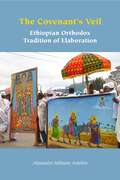
The Covenant's Veil: Ethiopian Orthodox Tradition of Elaboration (Orthodox Christianity and Contemporary Thought)
By Alexandra Sellassie Antohin. 2025
An exploration of how contemporary Ethiopian Orthodox Christianity preserves and protects sacred ideas and relationships“Ethiopia stretches her hand upon God,”…
the narrative of Sheba and Solomon, the material presence of the Ark of the Covenant in Axum. For Ethiopian Orthodox Christians, these classic understandings of the covenant are prized narratives. For historical and scriptural scholarship, a central focus is to explain the characteristics of Ethiopian Orthodox Christianity as retaining key “Old Testament” qualities to demonstrate a wide chasm with post-Enlightenment, secular societies. By widening the lens of analysis to include a body of knowledge best accessed through Orthodox Christian devotional culture, The Covenant’s Veil offers an interpretation that challenges the reader to adopt a novel understanding of these well-established ideas.The multiple, complex ways that the covenant idea appears as ideas, idioms, customs, symbols, and articulations in the lifeworld of Ethiopian Orthodox are the starting point for The Covenant’s Veil. Ethiopia’s story of the covenant is a domain of nested reference points that inspires celebrants, through their devotional activities, to expand and elaborate upon a network of meanings. Covenant refractions within Ethiopian Orthodox devotional culture not only demonstrate the established pattern of magnifying spiritual importance through symbolic similes and analogic pairings, but perform a vital function for keeping traditional knowledge alive and current. Detailed ethnographic material arranges devotional activities such as mahaber rituals of communing and processions of tabots on feast days. It describes habits of making vows, presenting oneself at church, and telling stories of saints and their covenants. Thinking about the covenant concept as refracting—the bending motion of points encountering a common surface—is a way to conceive how these reference points reveal a connective thread, what is theorized as an Ethiopian Orthodox method of elaboration. Identifying when and where elaboration of tradition is happening provides an opportunity to demonstrate how Orthodox Christianity is integral to the lives and actions of its faithful. By reframing covenant as expanding beyond Ethiopian religious and political exceptionalism, The Covenant’s Veil provides us with a timely reappraisal of this concept in light of increased social fragmentation and the urgency for negotiating harmony in a country with many forms of diversity.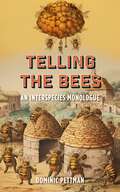
Telling the Bees: An Interspecies Monologue
By Dominic Pettman. 2025
In a bid to wean himself off Facebook and Twitter, media scholar and cultural theorist Dominic Pettman decided to revive…
an ancient custom. He decided to tell the local bees of his thoughts, theories, musings, and meditations. The result was an apian journal that parses the daily news and the routines of modern life in a more sustained and reflective way than the Pavlovian posts to which we are so addicted.The account that emerges from Pettman’s regular discussion with the bees forms a compelling portrait of the tumultuous period running from the Fall of 2019 to New Year’s Eve, 2022. What began as a reflection on the traumatic effects of an “unprecedented” presidency soon evolved into a real-time response to the equally extraordinary events of the pandemic and its aftermath. One key concern that emerges from Pettman’s ongoing discussion with the bees is the extent to which, thanks to the alienating effects of neoliberalism, we were already engaged in an advanced form of social distancing long before anyone had heard of COVID. Other key themes include education, human-animal relations, climate change, mediated intimacy, attention ecologies, collective memory, slow violence, the self-fulfilling prophecy that is New York City, the never-ending end of history, and the mundane strategies we share in a bid to forge on, despite the accumulating challenges of the twenty-first century. Telling the Bees is an invitation to rediscover the art of reflection and a profound meditation on human connection, alienation, and our collective yearning for intimacy in an age of distance. Through what Pettman describes as an "interspecies monologue," readers are treated to a unique perspective on navigating the complexities of the twenty-first century, inspired by the ingenuity and resilience of our natural cohabitants.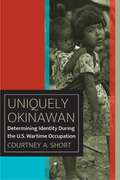
Uniquely Okinawan explores how American soldiers, sailors, and Marines considered race, ethnicity, and identity in the planning and execution of…
the wartime occupation of Okinawa, during and immediately after the Battle of Okinawa, 1945–46.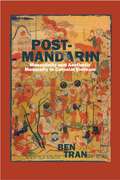
Post-Mandarin offers an engaging look at a cohort of Vietnamese intellectuals who adopted European fields of knowledge, a new Romanized…
alphabet, and print media—all of which were foreign and illegible to their fathers. This new generation of intellectuals established Vietnam’s modern anticolonial literature.The term “post-mandarin” illuminates how Vietnam’s deracinated figures of intellectual authority adapted to a literary field moving away from a male-to-male literary address toward print culture. With this shift, post-mandarin intellectuals increasingly wrote for and about women.Post-Mandarin illustrates the significance of the inclusion of modern women in the world of letters: a more democratic system of aesthetic and political representation that gave rise to anticolonial nationalism. This conceptualization of the “post-mandarin” promises to have a significant impact on the fields of literary theory, postcolonial studies, East Asian and Southeast Asian studies, and modernist studies.